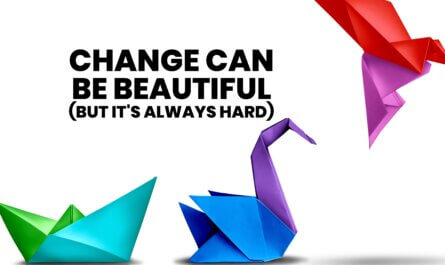Introduction
Change is hard. Everyone knows it. It’s why change management has become a discipline of increasing importance–especially in terms of organizational change. As a Prosci-certified change management professional, I find books on the subject fascinating–particularly when they tell the story in a new and simplified way. For most of us, including me: simple is better.
Switch, written by Dan and Chip Heath, focuses on how to make changes in our lives and the world around us. The authors use the metaphor of a rider and an elephant and the path to illustrate how we can make changes in our lives and organizations. The rider represents our rational side, the elephant represents our emotional side, and the path represents culture, process, and organizational structure.
I love this metaphor if only because it makes so much sense that it’s easy to remember.
Direct the Rider
The first principle from Switch is to direct the rider. The rider represents our rational side, and we need to direct it in order to make changes in our lives. According to the authors, there are three ways to direct the rider: follow the bright spots, script the critical moves, and point to the destination.
Following the bright spots means looking for what is already working and doing more of it. This approach is based on the idea that it is easier to build on existing strengths than to try to fix weaknesses. If you’re trying to lose weight, for example, you might start by identifying the healthy foods you already enjoy and finding ways to incorporate them into your diet more often.
Scripting the critical moves means breaking down the change into small steps. This makes the change less overwhelming and more manageable. For example, if you’re trying to start a new exercise routine, you might begin by committing to just ten minutes of activity each day, gradually increasing the duration and intensity over time.
Pointing to the destination means creating a clear vision of what we want to achieve. This helps to keep us motivated and focused on our goals. If you’re trying to save money, for example, you might set a specific savings goal and create a plan for how you’ll reach it.
Motivate the Elephant
The second principle from Switch is to motivate the elephant. The elephant represents our emotional side, and we need to motivate it in order to make changes in our lives. According to the authors, there are three ways to motivate the elephant: find the feeling, shrink the change, and grow your people.
Finding the feeling means tapping into the emotions that will drive the change. This involves identifying the positive emotions that will come from making the change, such as feeling happier, healthier, or more successful. By focusing on these positive emotions, we can stay motivated and committed to our goals.
Shrinking the change means making the change seem less daunting. This involves finding ways to break the change down into smaller, more manageable steps. For example, if you’re trying to quit smoking, you might start by cutting back on the number of cigarettes you smoke each day, rather than trying to quit cold turkey.
Growing your people means creating a sense of identity and belonging. This involves finding ways to connect with others who share our goals and values. By surrounding ourselves with supportive people, we can stay motivated and committed to making positive changes in our lives.
Shape the Path
The third principle from Switch is to shape the path. According to the authors, we need to shape the path in order to make changes in our lives. This means making the change easier and more appealing. There are three ways to shape the path: tweak the environment, build habits, and rally the herd.
Tweaking the environment means changing the context in which the behavior occurs. This can involve making small changes to our physical or social environment that make it easier to engage in the desired behavior. For example, if you’re trying to eat healthier, you might rearrange your kitchen so that healthy foods are more visible and accessible.
Building habits means creating routines that make the behavior automatic. This involves repeating the desired behavior until it becomes a habit. For example, if you’re trying to establish a regular exercise routine, you might commit to working out at the same time every day until it becomes a habit.
Rallying the herd means creating a sense of social proof. This involves finding ways to show that others are engaging in the desired behavior and that it is socially acceptable and desirable. For example, if you’re trying to encourage people to recycle, you might share statistics on how many people in your community are already recycling.
I loved this book. It provides practical advice on how to make effect change in our lives or organizations with practical examples and in-depth research to explain the principles thoroughly.
So, what are you waiting for? Flip the Switch!




